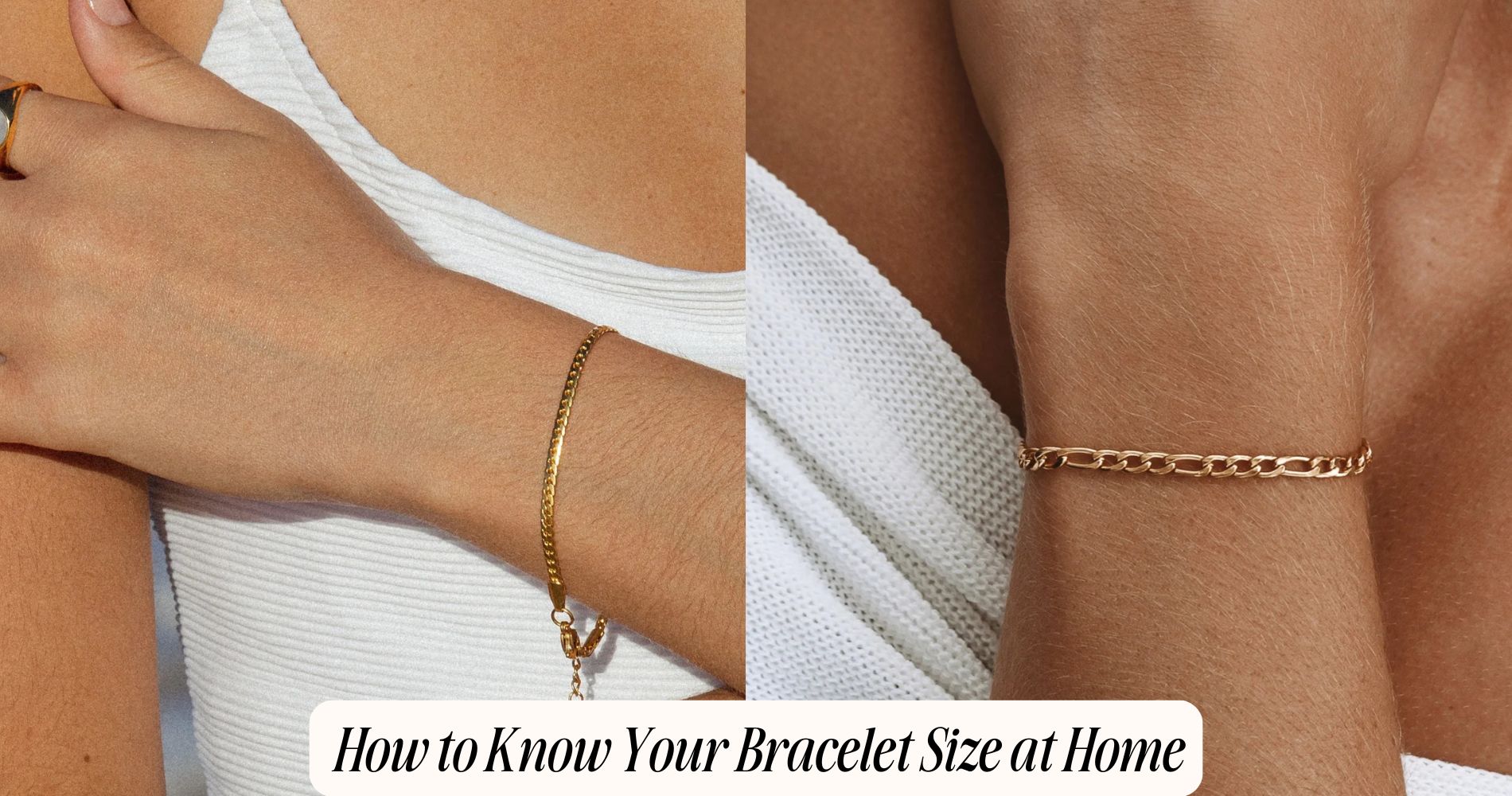
How to Know Your Bracelet Size at Home
If you're wondering how to know your bracelet size, start by wrapping a flexible measuring tape snugly around your wrist—just below the wrist bone. No tape? A non-stretchy string and a ruler work just as well to measure your wrist’s exact circumference. Once you have the number, add 0.25 to 1 inch depending on whether you prefer a snug or looser fit. Since wrist size can fluctuate, measure at different times for the most accurate result. Once you’ve got your size, explore our Dainty Gold Bracelet collection to find the perfect fit with timeless, delicate style.
Gathering the Materials You’ll Need
To accurately determine your bracelet size, you’ll need three essential items: a flexible measuring tape, a flat ruler, and a strip of non-stretchy string or paper.
Begin by assembling a materials checklist to verify you have all the essential tools required for precise measurement. A flexible measuring tape allows you to follow the natural contour of your wrist, producing an accurate circumference reading.
If you don’t have a tape, a flat ruler combined with a non-stretchy string or paper strip serves as a reliable alternative for measurement. Make certain the string or paper is firm and doesn’t stretch, as elasticity can lead to incorrect sizing.
Gather these essential tools before starting the measuring process to streamline your workflow and confirm accurate bracelet size determination.
Measuring Your Wrist With a Flexible Tape Measure
With your materials ready, position your flexible measuring tape directly against the skin just below your wrist bone, where a bracelet typically rests.
Hold the tape firmly but guarantee it’s not too tight or too loose, as this could affect accuracy. Wrap the flexible tape around your wrist, maintaining an even tension throughout.
Align the zero mark with the end point where the tape overlaps, and note the measurement in either inches or centimeters, depending on your preference. This value represents your wrist circumference, which is essential for determining your correct bracelet size.
For most bracelet styles, you’ll want to add a small allowance—typically 0.5 to 1 inch—for comfort.
Record your wrist circumference immediately to avoid forgetting or misreading the measurement.
Using a Strip of Paper or String for Measurement
One practical alternative for measuring your wrist—especially if you don’t have a flexible tape measure—is to use a narrow strip of paper or a length of non-stretch string.
Using paper strip techniques, you’ll want to cut a piece of paper no wider than 1 cm to guarantee accuracy and easy manipulation around the wrist contours.
Similarly, when applying string measurement tips, select a string that’s thin, flat, and doesn’t stretch, as elasticity can compromise your results.
Wrap the paper or string around your wrist so it lies flat against the skin, making certain there are no twists or gaps.
Maintain consistent tension throughout, as too much slack or tightness may result in an inaccurate size.
This preparatory step sets the foundation for precise bracelet sizing.
Marking and Measuring Your Wrist Circumference
After securing the paper strip or string around your wrist, use a fine-tipped pen or pencil to mark the exact point where the end overlaps the rest of the material. This mark corresponds with your wrist's circumference, an important metric based on your unique wrist anatomy.
Carefully lay the marked strip flat against a ruler, making sure there are no bends or slack, to obtain a precise measurement in millimeters or inches. Accurate measurements are vital for proper sizing techniques, as even small discrepancies can affect comfort and fit.
Record this measurement, as it forms the foundational data for selecting or designing a bracelet. By following these steps, you’ll guarantee that your measurement accurately reflects the actual circumference of your wrist, facilitating reliable bracelet sizing.
Determining Your Preferred Bracelet Fit
How do you translate a wrist measurement into a bracelet that feels just right? Start by defining your preferred fit, which depends largely on comfort and style preferences.
Some people favor a snug fit, where the bracelet sits close to the skin, minimizing movement. Others may opt for a relaxed fit, allowing more mobility and airflow.
Consider the bracelet’s design—chunky bangles and rigid cuffs typically require a looser fit, while delicate chains can be worn closer to the wrist.
Think about daily activities and whether you want your bracelet to stay put or move freely. Your style preferences—classic, sporty, or statement—also influence fit.
Converting Measurements to Bracelet Sizes
Once you've determined your ideal bracelet fit, you'll need to translate your wrist measurement into an accurate bracelet size.
Begin by noting your wrist circumference—measured snugly, without slack. To achieve a proper fit, apply conversion techniques by adding the appropriate increment based on your fit preference: typically, add 0.25 to 0.5 inches for a snug fit, 0.5 to 0.75 inches for a comfort fit, and 1 inch or more for a loose fit.
These size adjustments account for movement, clasp style, and bead diameter, ensuring the bracelet sits correctly on your wrist. Precision is essential; even minor discrepancies can impact comfort and wearability.
Always double-check calculations and round to the nearest standard bracelet size for best results before proceeding to select your jewelry.
Understanding Common Bracelet Sizing Charts
Although wrist measurements provide an essential starting point, you’ll encounter standardized sizing charts that translate these numbers into commonly accepted bracelet sizes.
These charts typically associate specific wrist circumferences with recommended bracelet lengths, ensuring a comfortable and secure fit. For example, if your wrist measures 6.5 inches, a sizing chart may suggest a bracelet length of 7 inches, accounting for necessary clearance.
It’s important to note that sizing materials—whether metal, leather, or beaded—can affect fit due to their flexibility or rigidity. Review these materials’ properties when consulting a chart.
Always check if the chart refers to actual bracelet length or intended wrist size, as this distinction impacts sizing accuracy. Reliable charts streamline the selection process, especially when shopping online.
Tips for Buying Adjustable and Stretch Bracelets
Anyone seeking versatility in bracelet sizing should consider adjustable and stretch designs, as these options accommodate a broader range of wrist circumferences without compromising comfort.
When shopping for adjustable styles, look for mechanisms such as sliding knots, pull cords, or chain extenders, which allow precise customization to your wrist size. Evaluate the durability of these components, ensuring they secure the bracelet without slipping during daily wear.
For stretch materials, opt for high-quality elastic cords that retain flexibility and resilience after repeated use. Examine the bead holes and knots to confirm smooth construction, which prevents irritation and prolongs the bracelet’s lifespan.
Special Considerations for Different Bracelet Styles
While choosing a bracelet, it’s essential to recognize that each style—such as bangles, cuffs, charm bracelets, and chain link designs—requires distinct sizing considerations to guarantee ideal fit and comfort.
For bead bracelets, you should account for the diameter of the beads, as bulkier beads will result in a tighter fit. Measure your wrist and add 0.5 to 1 inch to accommodate bead size and movement.
With cuff bracelets, verify the opening is wide enough for your wrist to slip through, but not so big that the cuff rotates excessively.
For bangles, choose a size that passes comfortably over your knuckles.
Charm and chain link bracelets often need a slightly looser fit to allow for charm movement and prevent pinching.
Double-Checking Your Measurements for Accuracy
Before finalizing your bracelet size, verify your measurements are precise by repeating the process at least twice using a flexible tape measure or a strip of paper.
Consistency is key—if you notice discrepancies between attempts, reassess your measuring techniques. Ascertain that the tape or paper lies flat against your skin and that you measure at the intended point on your wrist.
Consider your wrist shape, as round and oval wrists may yield slightly different measurements if the tape isn’t applied evenly. Double-check the snugness: the tape should be firm but not constricting.
Record each result and use the most consistent value. By confirming your numbers, you’ll minimize sizing errors and ascertain the chosen bracelet will fit comfortably, regardless of variations in wrist shapes or bracelet styles.
Frequently Asked Questions
Can Bracelet Size Change With Age or Weight Fluctuation?
You'll notice bracelet size can change due to age impact and weight effects. As you age, tissue elasticity decreases, and weight fluctuations may cause wrist circumference to vary, directly influencing ideal bracelet fit and overall comfort.
How Do Seasonal Temperature Changes Affect Wrist Size?
Seasonal temperature changes directly impact wrist swelling due to temperature sensitivity. In warmer conditions, vasodilation increases blood flow, causing wrists to swell, while colder temperatures trigger vasoconstriction, reducing swelling. Always consider these physiological responses when evaluating wrist size.
Are Different Materials Better for Sensitive Skin?
Yes, different materials impact skin sensitivity. If you have metal allergies, choose hypoallergenic materials like titanium, surgical stainless steel, or silicone. These options reduce allergic reactions and irritation, ensuring you wear bracelets comfortably without adverse dermatological effects.
What Should I Do if My Wrist Size Falls Between Two Sizes?
If your wrist size falls between two options, prioritize bracelet sizing comfort by selecting the larger size. You can use size adjustment features like extender chains or removable links to achieve a precise, professional fit.
How Do I Discreetly Find Someone Else’S Bracelet Size for a Gift?
To discreetly determine someone’s bracelet size, you can borrow an existing bracelet for measurement or employ sizing tools like a flexible tape. Record secret measurements, ensuring accuracy by measuring at the clasp’s inner circumference for professional precision.
Conclusion
By following these steps, you’ll accurately determine your bracelet size at home. Use a flexible tape measure, string, or paper strip to measure your wrist, then consult sizing charts to select the ideal fit—snug, comfort, or loose. Remember, certain bracelet styles and materials, like bangles or stretch bands, require special consideration. Always double-check your measurement for precision, ensuring a comfortable and secure fit when purchasing bracelets online or in-store. Proper sizing enhances both comfort and style.







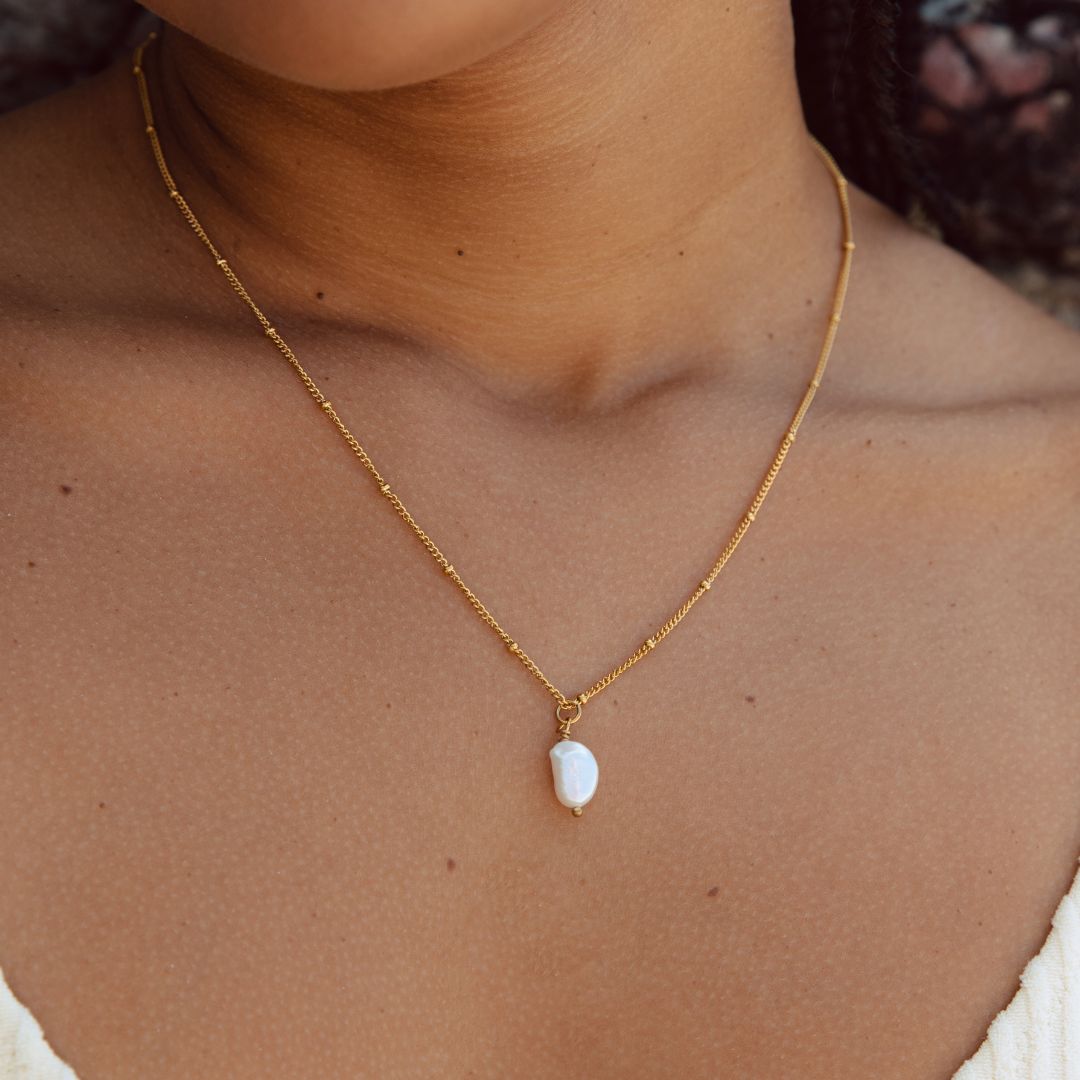

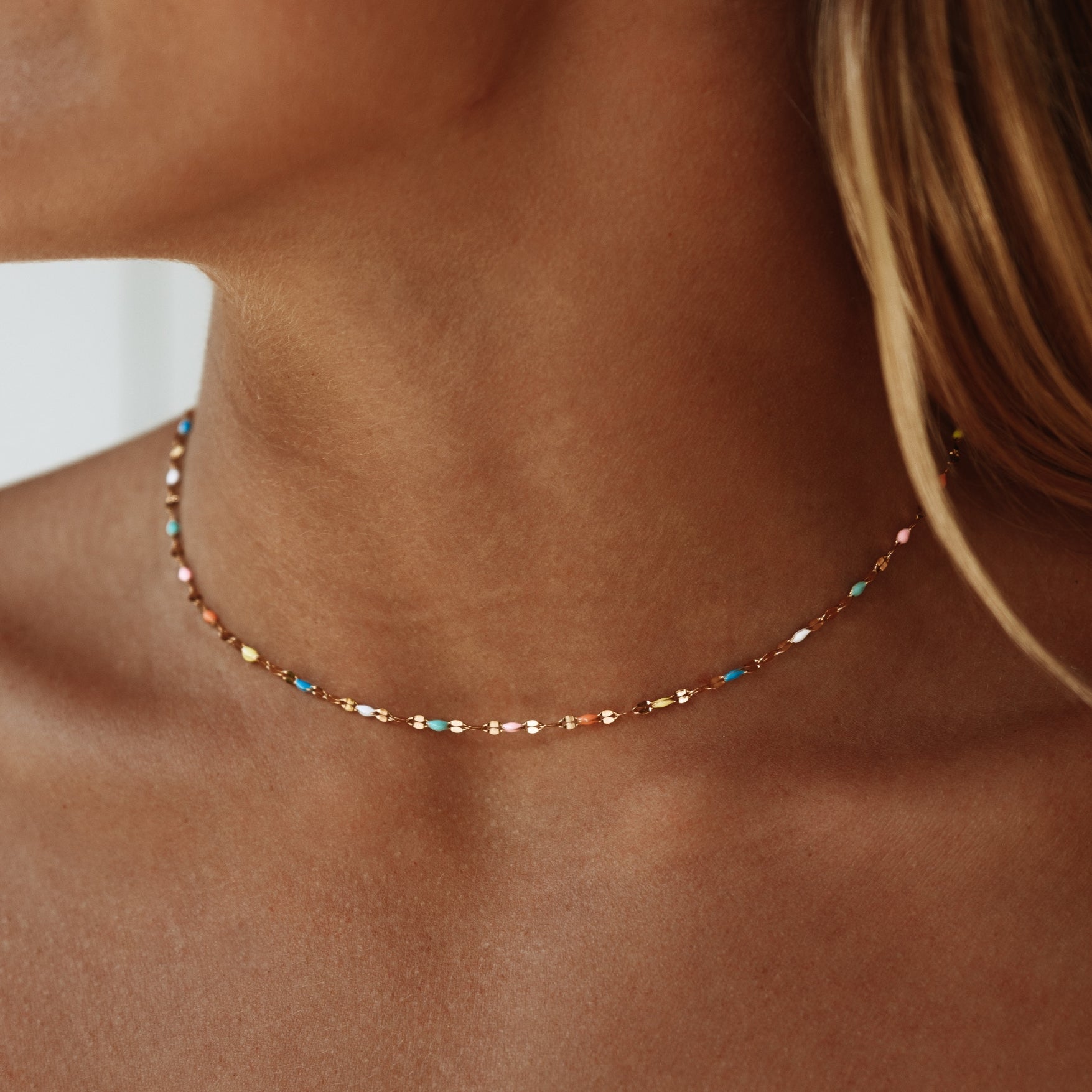


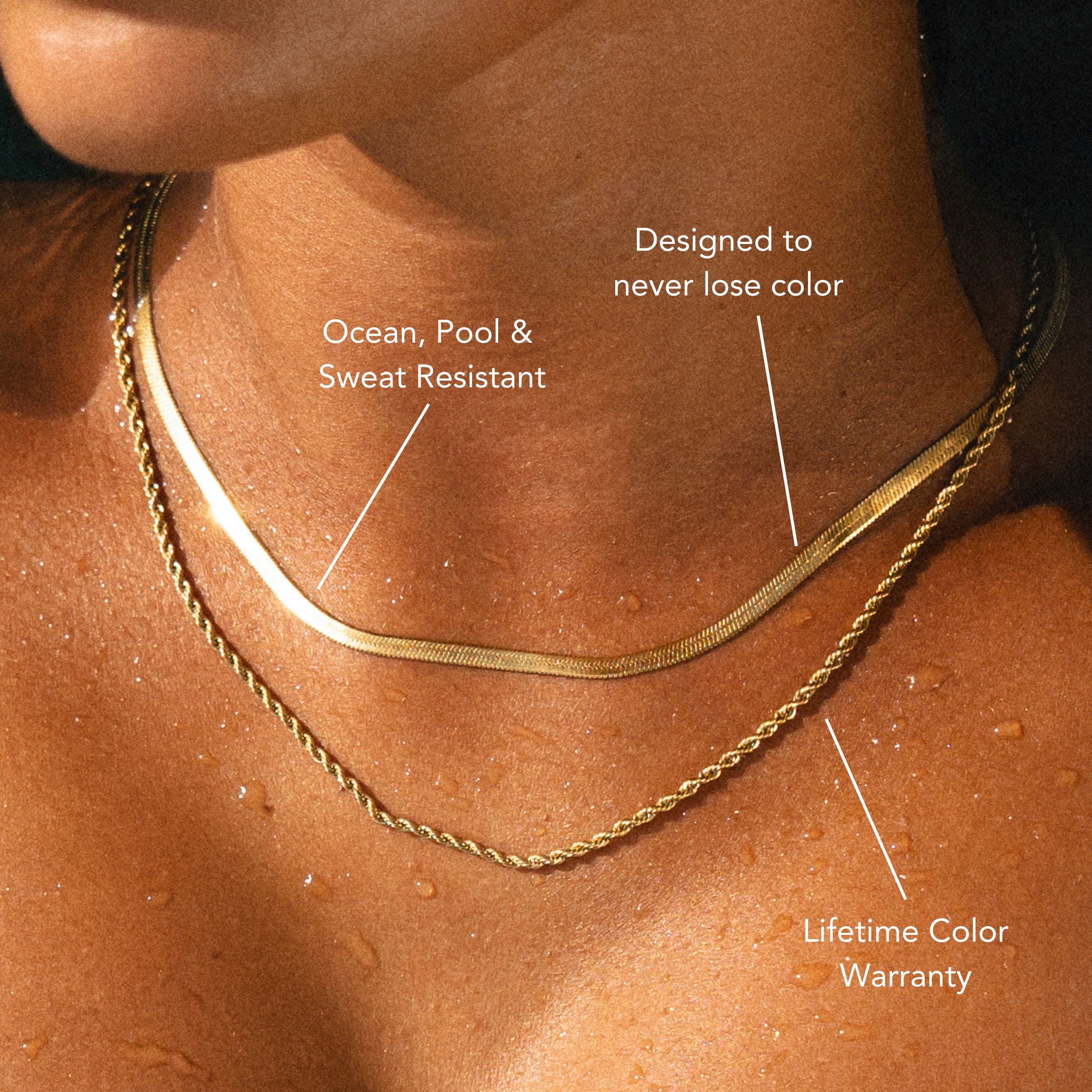
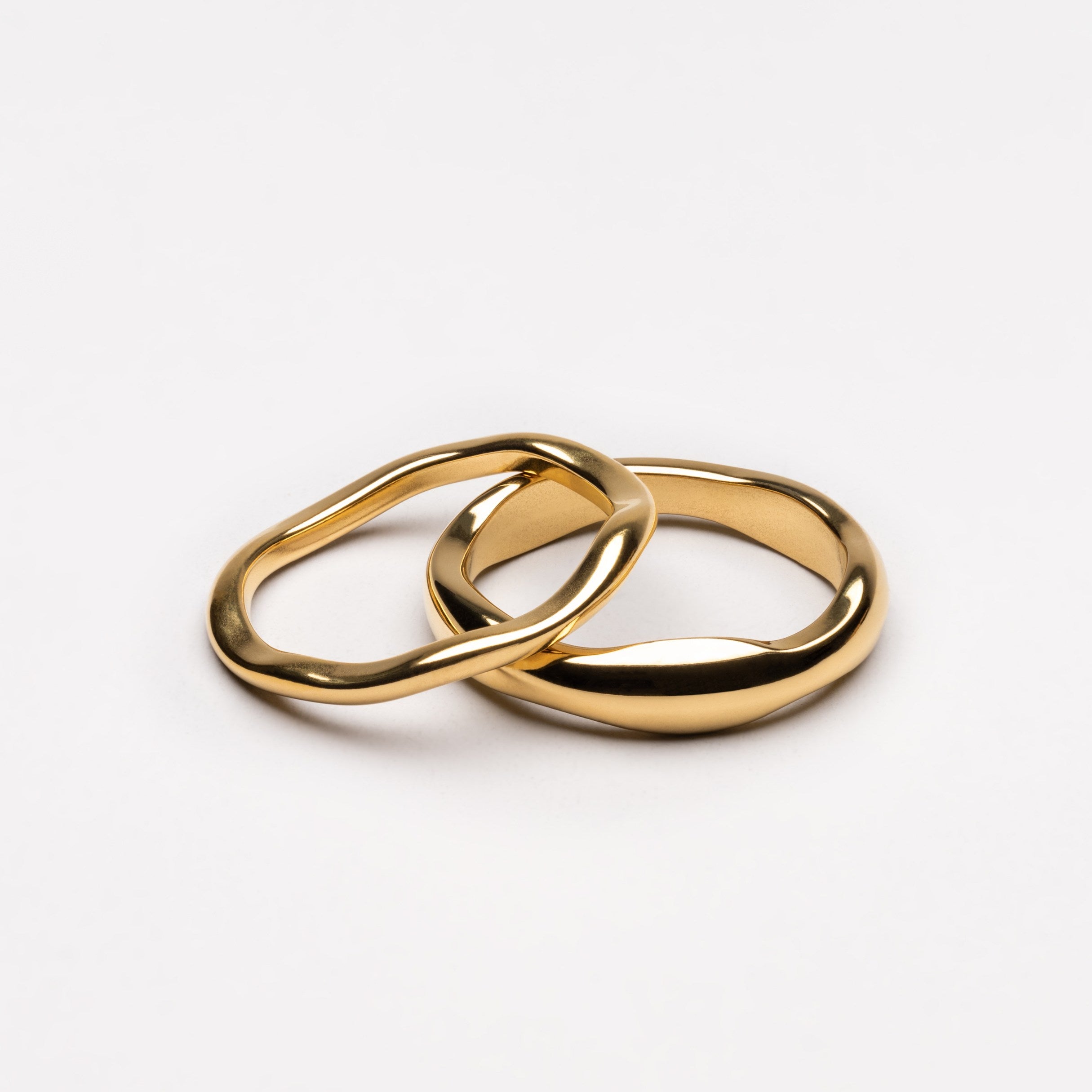
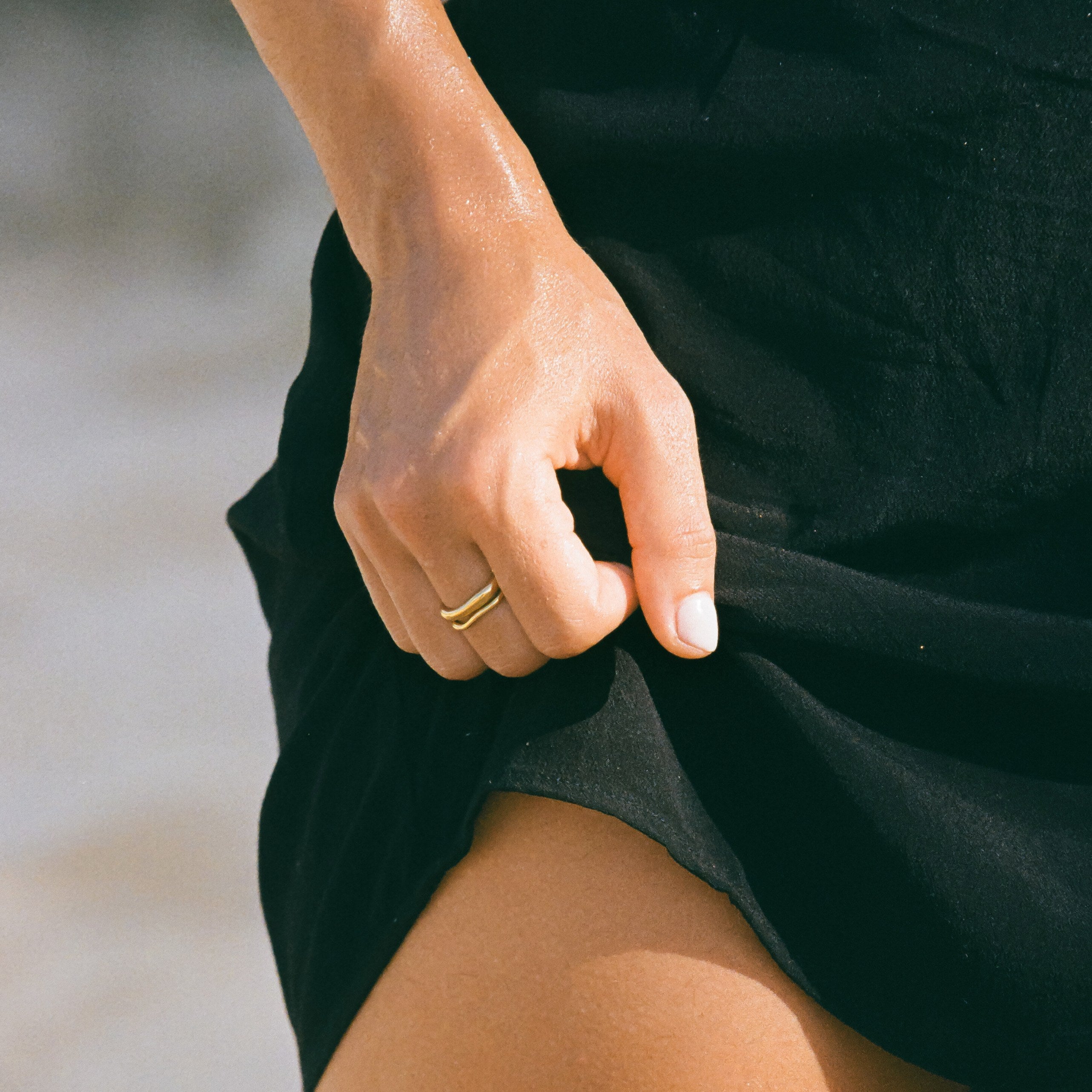

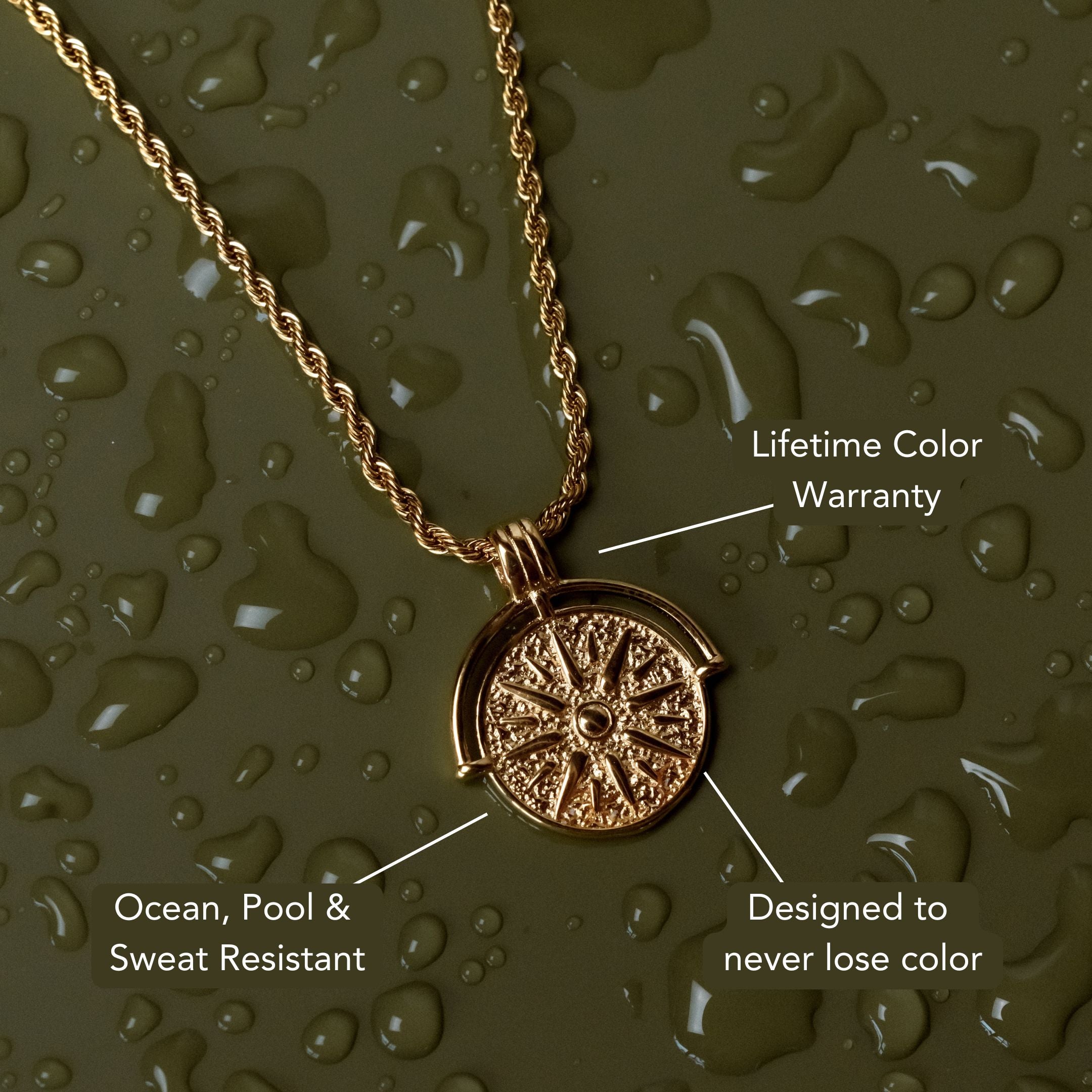






コメントを書く
このサイトはhCaptchaによって保護されており、hCaptchaプライバシーポリシーおよび利用規約が適用されます。